|
ANTHROPOCENE
EPOCH
PLEASE USE OUR A-Z INDEX
TO NAVIGATE THIS SITE
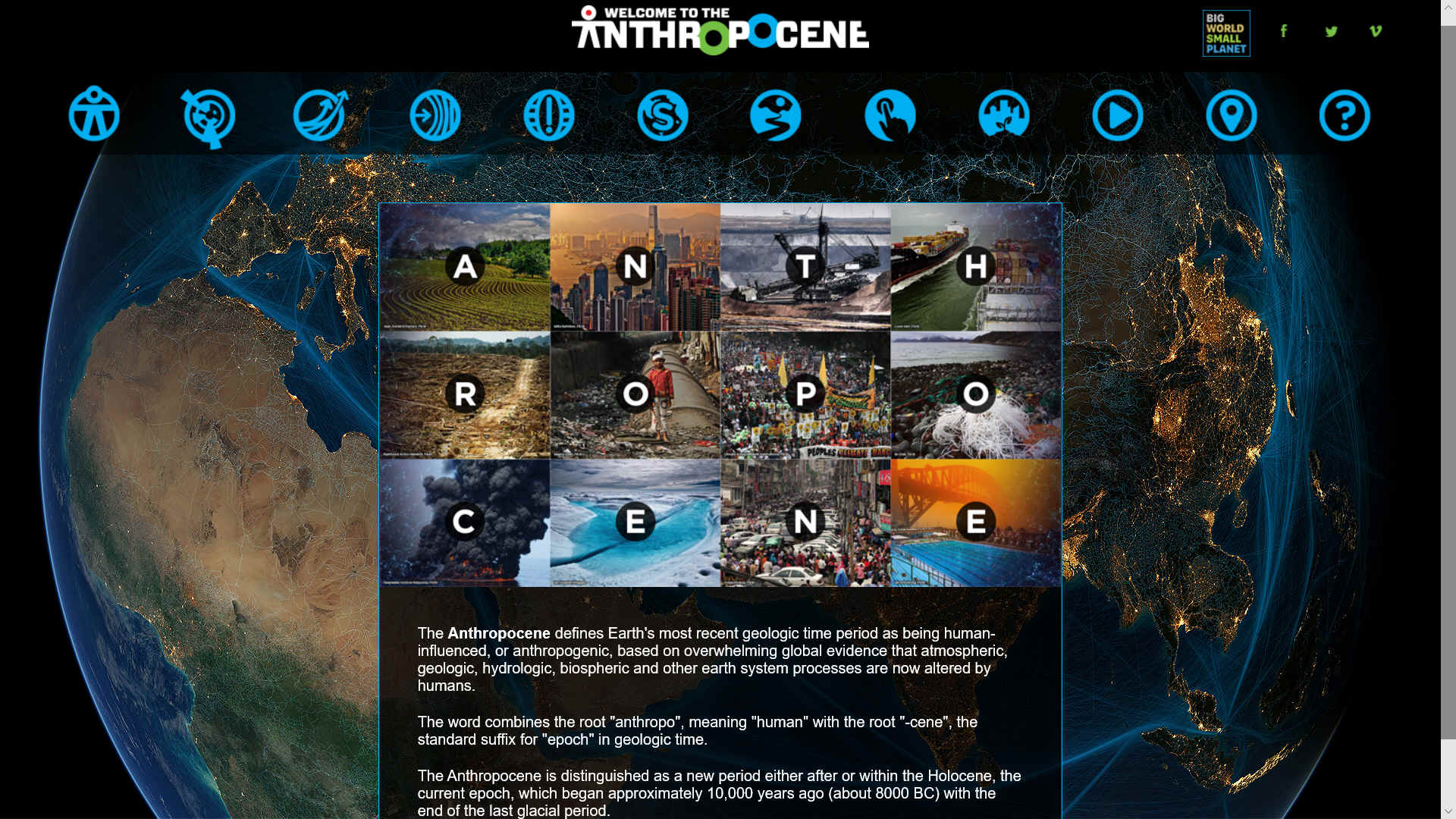
Human activity, predominantly the global economic system, is now the prime driver of change in the Earth System — the sum of our planet's interacting physical, chemical, biological and
human processes. This is the conclusion made visible in a set of 24 global indicators, or a "planetary dashboard”, charting the "Great Acceleration" in human activity from the start of the industrial revolution in 1750 to 2010, and the subsequent changes in the
Earth System – e.g. greenhouse gas levels, ocean acidification, deforestation and biodiversity deterioration.
The post-1950 acceleration of the human imprint on the Earth System, particularly the 12 graphs that show changes in Earth System structure and functioning, have played a central role in the discussion around the formalisation of the Anthropocene as the next epoch in Earth history.
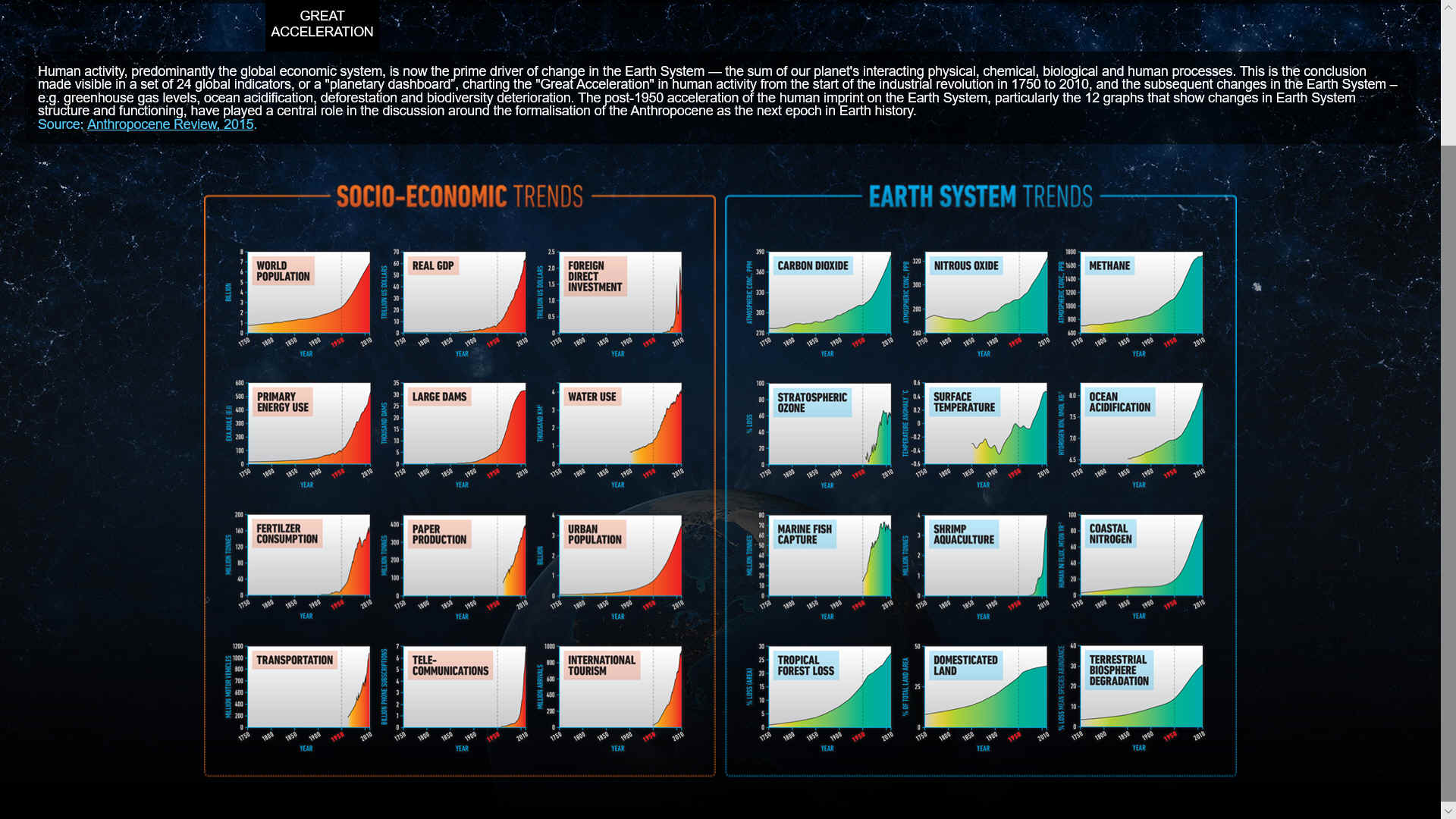
The Anthropocene is the idea that the Earth is entering a new epoch in its geological history, in which human beings have for the first time become the primary agents of change on a planetary scale. This gives the new epoch its name. Anthropocene is derived from the Greek for ‘human’ and stands alongside other geological epochs, such as the Holocene which began at the end of the last Ice Age around twelve thousand years ago.
The Industrial Revolution saw the appearance of the world’s first fossil-fuel economy through its exploitation of Britain’s coal reserves, and a huge intensification in the mechanisation of work and transport thanks to the development of a more efficient steam-engine by James Watt and Matthew Boulton from 1769.
North-eastern coal barons like George Bowes of Gibside developed their mines to fuel the booming metropolis of London after 1700. Cotton mills like Quarry Bank started using water power, but by the early-nineteenth century were increasingly converting to carbon-hungry steam.
The period saw the beginning of widespread pollution of land, air, and water as factories pumped out smoke, effluents, and other waste products. Meanwhile, urban areas began to grow fast, adding to the environmental problems.
Humans have likely used more energy since 1900 than in all of previous human history combined. By the end of the twentieth century a scientific consensus emerged that due primarily to the burning of fossil fuels, global warming of the atmosphere was taking place at an accelerating rate.
This has affected the polar regions most immediately, but there is today a growing understanding of the links to rising sea-levels, extreme weather events and desertification. Meanwhile, the use and continued testing of nuclear weapons from 1945 provided a new global marker (sometimes referred to as a 'golden spike') for the Anthropocene. The world-wide presence of radioactive fallout, which will remain detectable in the earth's soils for at least 100,000 years, is favoured by some geologists as marking the definitive transition out of the Holocene.
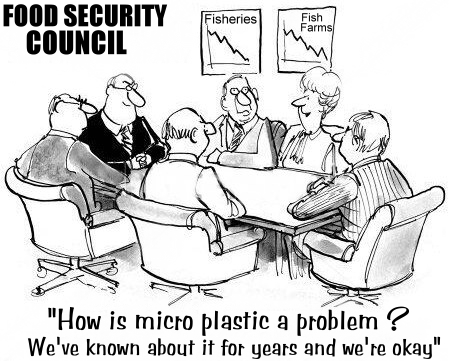
BIODIVERSITY
The human impact on biodiversity forms one of the primary attributes of the Anthropocene. Humankind has entered what is sometimes called the Earth's sixth major extinction. Most experts agree that human activities have accelerated the rate of species extinction. The exact rate remains controversial – perhaps 100 to 1000 times the normal background rate of
extinction. A 2010 study found that marine phytoplankton – the vast range of tiny algae species accounting for roughly half of Earth's total photosynthetic biomass – has declined substantially in the world's oceans over the past century. From 1950 alone, algal biomass decreased by around 40%, probably in response to ocean warming – and that the decline had gathered pace in recent years. Some authors have postulated that without human impacts the biodiversity of the planet would continue to grow at an exponential rate.
Increases in global rates of extinction have been levated above background rates since at least 1500, and appear to have accelerated in the 19th century and further since. A New York Times op-ed on 13 July 2012 by ecologist Roger Bradbury predicted the end of biodiversity for the oceans, labelling coral reefs doomed:
"Coral reefs will be the first, but certainly not the last, major ecosystem to succumb to the Anthropocene." This op-ed quickly generated much discussion among conservationists; The Nature Conservancy rebutted Bradbury on its website, defending its position of protecting coral reefs despite continued human impacts causing reef declines.
In a pair of studies published in 2015, extrapolation from observed extinction of Hawaiian snails of the family Amastridae, led to the conclusion that "the biodiversity crisis is real", and that 7% of all species on Earth may have disappeared already. Human predation was noted as being unique in the history of life on Earth as being a globally distributed 'superpredator', with predation of the adults of other apex predators and with widespread impact on food webs worldwide. A study published in May 2017 in Proceedings of the National Academy of Sciences noted that a "biological annihilation" akin to a sixth mass extinction event is underway as a result of anthropogenic causes. The study suggested that as much as 50% of animal individuals that once lived on Earth are already extinct.
A different study published in PNAS in May 2018 says that since the dawn of human civilisation, 83% of wild mammals have disappeared. Today, livestock makes up 60% of the biomass of all mammals on earth, followed by humans (36%) and wild mammals (4%). According to the 2019 Global Assessment Report on
Biodiversity and Ecosystem Services by IPBES, 25% of plant and animal species are threatened with extinction.
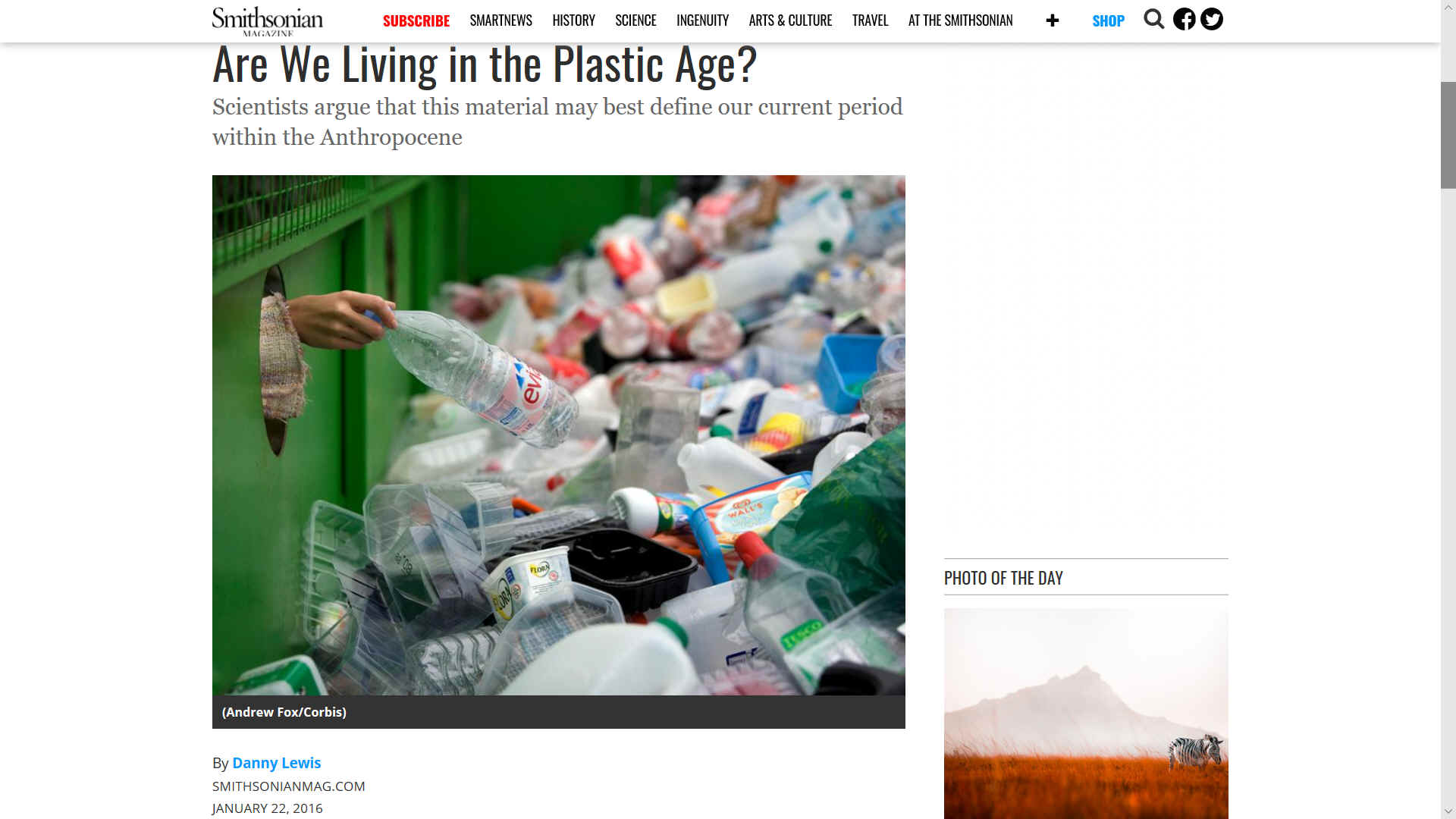
LINKS
& REFERENCE
https://en.wikipedia.org/wiki/Anthropocene
http://anthropocene.info/
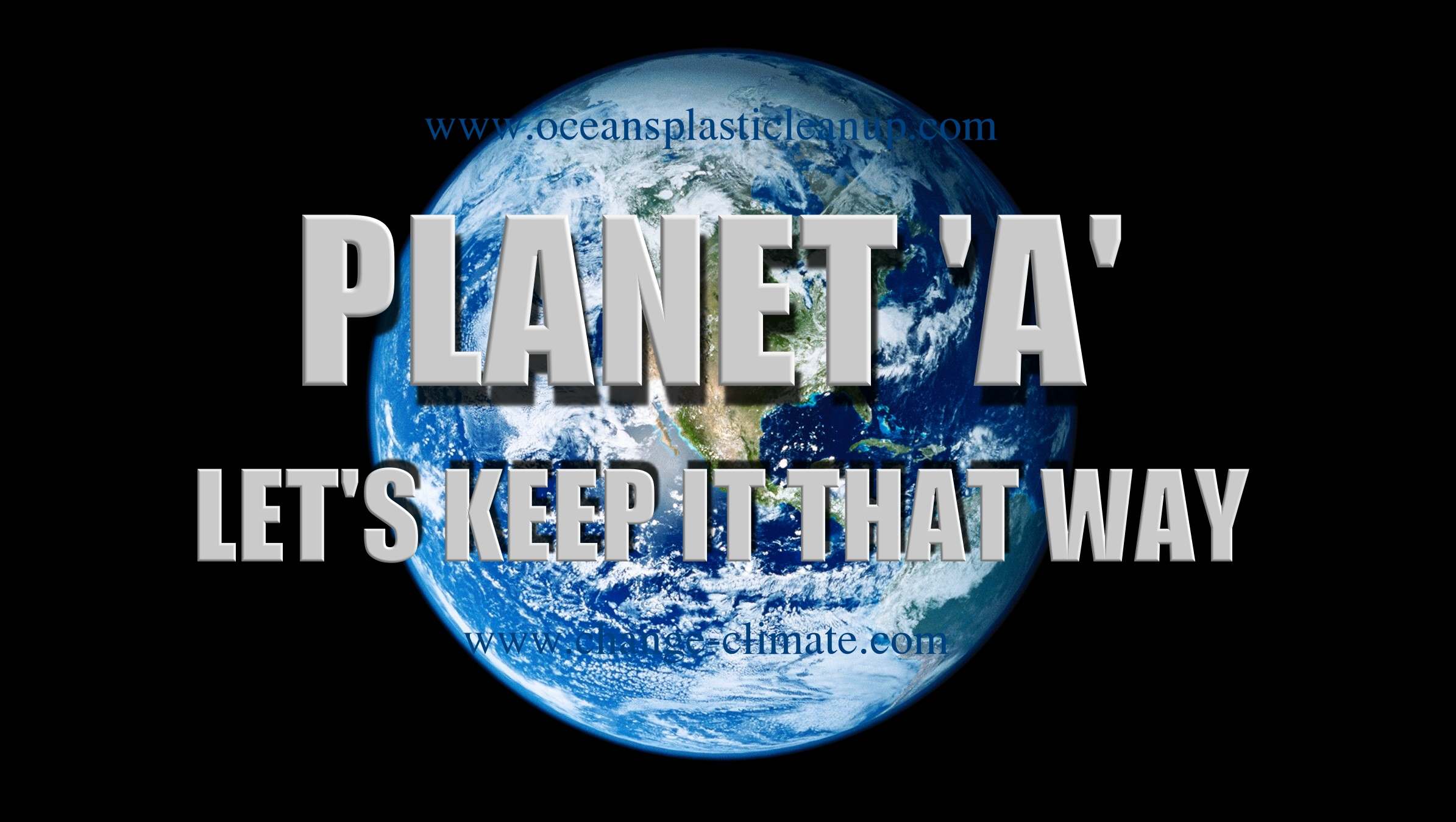
ARE
PLANET
EARTH'S POLICIES WORKING? - If
they were, we'd not have plastic poisoning the marine
environment, or global
warming. The problem is world leaders rely too much
on fossil fuels and do not want to rock the boat until there
is a solid backup plan, but the backup plan involves change.
And that frightens them to stay put even though the water is
already bubbling.
We cotton to
that. Nobody likes change. But instead of
overheating the planet and killing life undersea with toxic plastic, surely
it would make sense to brave the new world and accelerate the adoption of
renewables and a society that cleans up after itself. We need
new sustainable infrastructures to save PLANET A and a gradual
changeover plan that sits well with stakeholders. Not to have
the infrastructures ready is suicide politics - the way of the
Dodo.
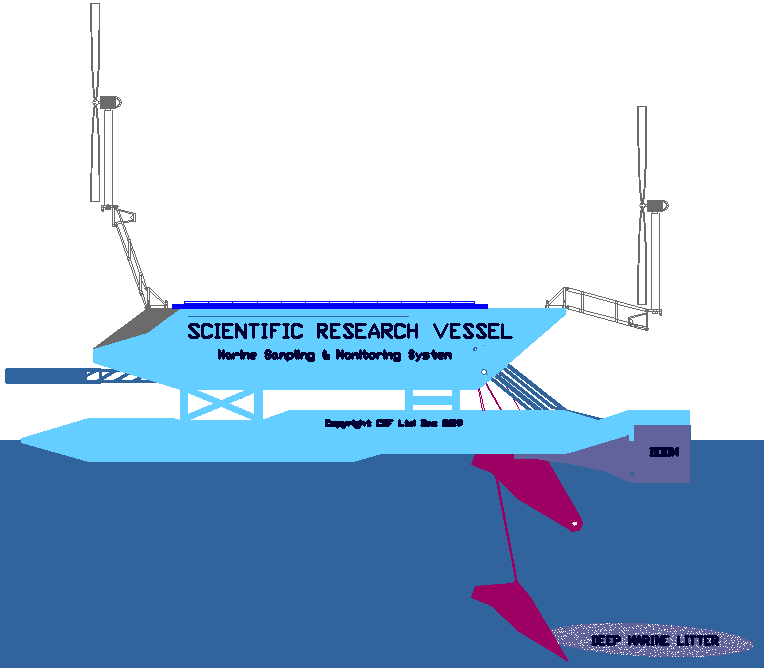
ABS
- BIOMAGNIFICATION
- CANCER
- CARRIER
BAGS - COTTON
BUDS - DDT
- FISHING
NETS
HEAVY
METALS - MARINE
LITTER - MICROBEADS
- MICRO
PLASTICS - NYLON
- OCEAN
GYRES - OCEAN
WASTE
PACKAGING
- PCBS
- PET
- PLASTIC
- PLASTICS
- POLYCARBONATE
- POLYETHYLENE
- POLYSTYRENE
- POLYPROPYLENE
POLYTHENE
- POPS
- PVC
- SHOES
- SINGLE
USE - SOUP
- STRAWS
- WATER
This website is
provided on a free basis as a public information service. copyright © Cleaner
Oceans Foundation Ltd (COFL) (Company
No: 4674774) 2020.
Solar
Studios, BN271RF, United Kingdom.
COFL is
a company without share capital.
|



